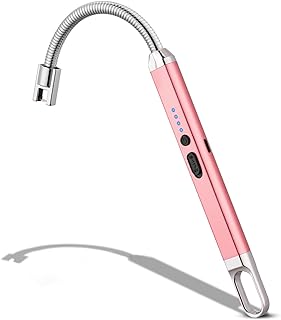A Brief History of the Lighter: From Flint & Steel to Plasma
The journey of the lighter is fascinating, spanning centuries of innovation and evolution. Here's a timeline of key milestones:
Early Beginnings:
* Flint and Steel (Ancient times): This was the earliest method of creating fire, utilizing the friction between flint and steel to generate sparks that ignited tinder. It remained the primary method for centuries.
* Tinderboxes (16th Century): These portable boxes containing flint, steel, and tinder provided a convenient way to carry fire-starting materials.
The Dawn of the Modern Lighter:
* 1823: The first chemical lighter, the Doebereiner's lamp, was invented. It used hydrogen gas and a platinum catalyst to create a flame. Though ingenious, its use was limited by the dangerous nature of hydrogen.
* 1830s: The phosphorus match was invented, providing a safer and more convenient way to start fires. This significantly reduced the demand for chemical lighters.
* 1892: The pneumatic lighter, a mechanical lighter using compressed air, was patented. This paved the way for modern lighter designs.
* 1903: The Zippo lighter, a windproof design using a wick and fluid, was patented and quickly gained popularity due to its reliability and durability.
The Age of Innovation:
* 1930s: Butane lighters emerged, offering a cleaner and more efficient fuel source. These lighters became widely popular and continue to be a dominant design today.
* 1960s: Electronic lighters made their debut, utilizing a spark generated by piezoelectric effect. While less common than butane lighters, they offer a flameless and convenient alternative.
* 1990s: The plasma lighter, utilizing a high-voltage electric arc to ignite fuel, was introduced. This technology offers a flameless, windproof, and environmentally friendly option.
The Future of the Lighter:
* Sustainability: With growing environmental concerns, lighter manufacturers are focusing on more sustainable materials and practices.
* Smart Technology: The integration of smart technology is likely to lead to innovative features like Bluetooth connectivity, rechargeable batteries, and customized flame settings.
Evolutionary Highlights:
* Fuel: From hydrogen gas to flint and steel to butane and now plasma, the fuel sources used in lighters have evolved significantly, driving efficiency and safety.
* Design: From bulky early models to sleek and compact designs, lighters have become more portable and aesthetically pleasing.
* Functionality: Windproof capabilities, adjustable flame settings, and even flameless ignition technology have expanded the functionality and convenience of lighters.
In conclusion, the history of the lighter is a testament to human ingenuity and the constant pursuit of efficient and convenient fire-starting solutions. From the humble flint and steel to the sophisticated plasma lighter, the journey continues to evolve with innovations driven by technological advancements and environmental considerations.


